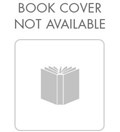Narrow Results By
Booming and blooming in Waterton
https://archives.whyte.org/en/permalink/catalogue15252
- Medium
- Library - Periodical
- Published Date
- 2016
- Author
- England, Sky
- Publisher
- In Canadian Rockies Annual, vol.01, 2016
- Call Number
- P
- Author
- England, Sky
- Publisher
- In Canadian Rockies Annual, vol.01, 2016
- Published Date
- 2016
- Physical Description
- p.28-29
- Medium
- Library - Periodical
- Call Number
- P
- Collection
- Archives Library
This material is presented as originally created; it may contain outdated cultural descriptions and
potentially offensive content.
Read more.
Booming and blooming in Waterton
https://archives.whyte.org/en/permalink/catalogue15397
- Medium
- Library - Periodical
- Published Date
- 2017
- Author
- England, Sky
- Publisher
- In Canadian Rockies Annual, vol.01, 2017
- Call Number
- P
- Author
- England, Sky
- Publisher
- In Canadian Rockies Annual, vol.01, 2017
- Published Date
- 2017
- Physical Description
- p.28-29
- Medium
- Library - Periodical
- Call Number
- P
- Collection
- Archives Library
This material is presented as originally created; it may contain outdated cultural descriptions and
potentially offensive content.
Read more.
Organizing nature : turning Canada's ecosystems into resources
https://archives.whyte.org/en/permalink/catalogue26201
- Medium
- Library - Book (including soft-cover and pamphlets)
- Published Date
- 2023
- Author
- Biro, Andrew and Cohen, Alice
- Publisher
- Toronto ; Buffalo ; London : University of Toronto Press
- Call Number
- 04 B53o
- Publisher
- Toronto ; Buffalo ; London : University of Toronto Press
- Published Date
- 2023
- Physical Description
- xviii, 264 pages : illustrations, maps ; 24 cm
- Abstract
- Organizing Nature explores how the environment is organized in Canada's resource-dependent economy. The book examines how particular ecosystem components come to be understood as natural resources and how these resources in turn are used to organize life in Canada. In tracing transitions from "ecosystem component" to "resource," this book weaves together the roles that commodification, Indigenous dispossession, and especially a false nature-society binary play in facilitating the conceptual and material construction of resources. Alice Cohen and Andrew Biro present an alternative to this false nature-society binary: one that sees Canadians and their environments in a constant process of making and remaking each other. Through a series of case studies focused on specific resources--fish, forests, carbon, water, land, and life--the book explores six channels through which this remaking occurs: governments, communities, built environments, culture and ideas, economies, and bodies and identities. Ultimately, Organizing Nature encourages readers to think critically about what is at stake when Canadians (re)produce myths about the false separation between Canadian peoples and their environments."-- Provided by publisher.
- Contents
- 1. Introduction -- 1.1 From How to Why -- 1.2 From Ecosystem Components to Resources -- 1.3 Politics beyond Policy -- 1.4 Resourcification through Six Channels -- 1.5 Book Outline and Common Themes -- 2. Channels: From Ecosystem Components to Resources -- 2.1 Introduction -- 2.2 Governments -- 2.3 Communities -- 2.4 Built Environments -- 2.5 Culture and Ideas -- 2.6 Economies -- 2.7 Bodies and Identities -- 2.8 Summary and Conclusions -- 3. From Fish to Fisheries -- 3.1 Introduction -- 3.2 Salmon in British Columbia -- 3.3 Cod in Newfoundland and Labrador -- 3.4 Channels in Action: Organizing Fisheries -- 3.5 Summary and Conclusions -- 4. From Forests to Timber -- 4.1 Introduction -- 4.2 Growth of Timber: Saint John, New Brunswick -- 4.3 Trees, Not Timber: Port Renfrew, British Columbia, and Darkwoods -- 4.4 Channels in Action: Organizing Forests -- 4.5 Summary and Conclusions -- 5. From Carbon to Energy -- 5.1 Introduction -- 5.2 Coal in Nova Scotia -- 5.3 Oil and Bitumen in Alberta -- 5.4 Natural Gas and Fracking -- 5.5 Channels in Action: Organizing Carbon -- 5.6 Summary and Conclusions -- 6. From H2O to Water -- 6.1 Introduction -- 6.2 Diversions and Damming -- 6.2.1 Diversion -- 6.2.2 Damming -- 6.3 Drinking Water -- 6.3.1 Vancouver, 2006 -- 6.3.2 Walkerton, Ontario, 2000 -- 6.3.3 Asubpeechoseewagong Netum Anishinabek-Grassy Narrows, Ontario, 1962-? -- 6.3.4 Drinking Water: Summary -- 6.4 Channels in Action: Organizing Water -- 6.5 Summary and Conclusions -- 7. From Land to Property -- 7.1 Introduction -- 7.2 Soil -- 7.3 Symbol -- 7.4 Space -- 7.5 Channels in Action: Organizing Land -- 7.6 Summary and Conclusions -- 8. From Bodies to Life -- 8.1 Introduction -- 8.2 Wild(?)life: Non-Human Animals -- 8.2.1 Pets and Other Companion Species -- 8.2.2 Fish and Game: Wildness as Economic Resource -- 8.2.3 Parks as Spaces for Wildlife -- 8.3 Human Resources -- 8.3.1 Blood and Plasma -- 8.3.2 Surrogacy -- 8.4 The Channels in Action: Organizing Life -- 8.5 Summary and Conclusions -- 9. Resources: Organized and Organizers -- 9.1 Channels in Action -- 9.2 Common Themes -- 9.2.1 Commodification -- 9.2.2 Indigenous Dispossession -- 9.2.3 Artificial Nature-Society Binary -- 9.3 Why Does 'Resource Thinking' Matter? -- 9.3.1 Winning and Losing -- 9.3.2 Why Is It Important to Think beyond Policy?
- ISBN
- 9781487594848
- Accession Number
- P2023.22
- Call Number
- 04 B53o
- Collection
- Archives Library
This material is presented as originally created; it may contain outdated cultural descriptions and
potentially offensive content.
Read more.

